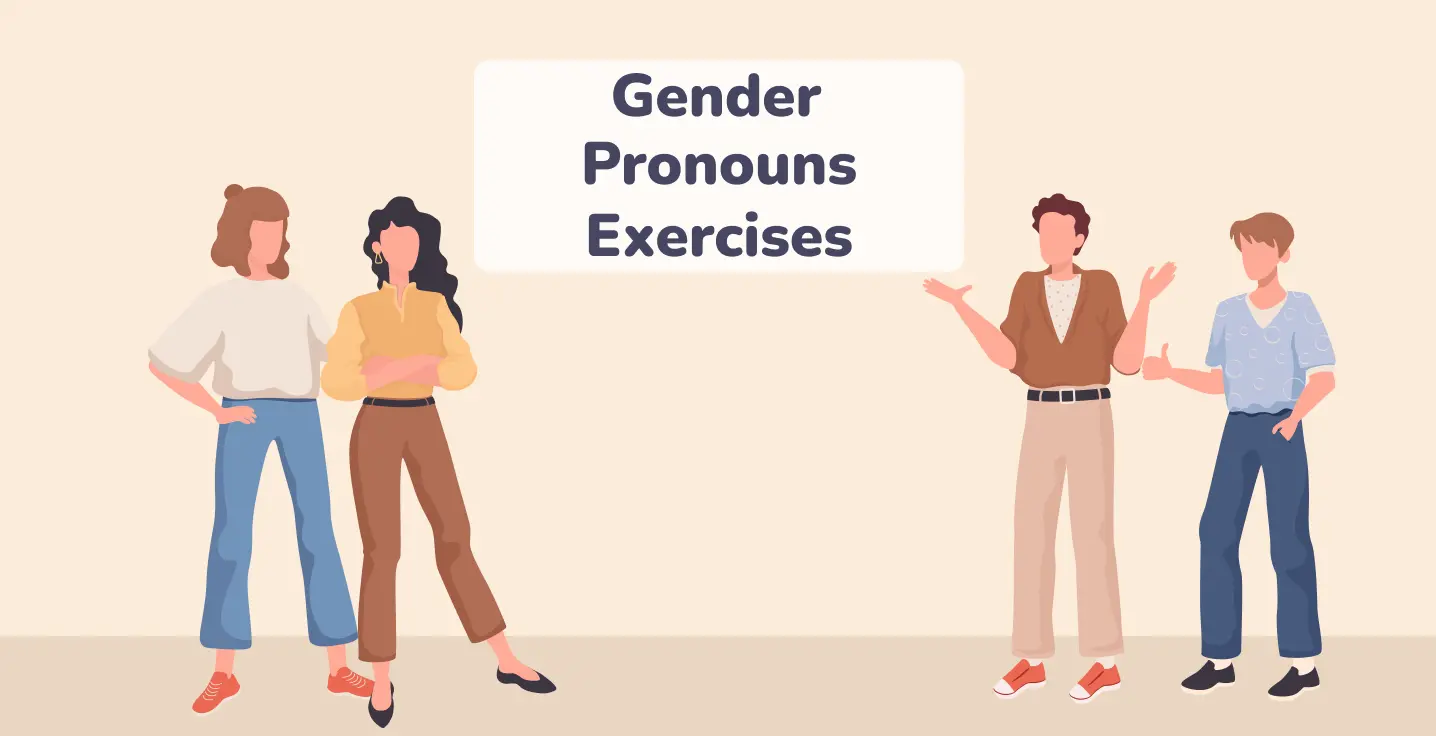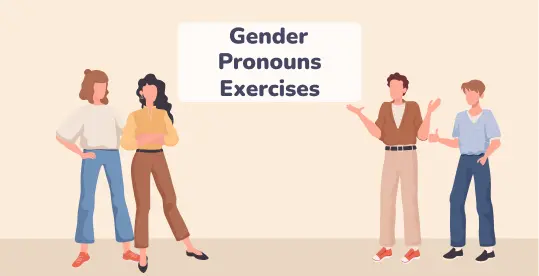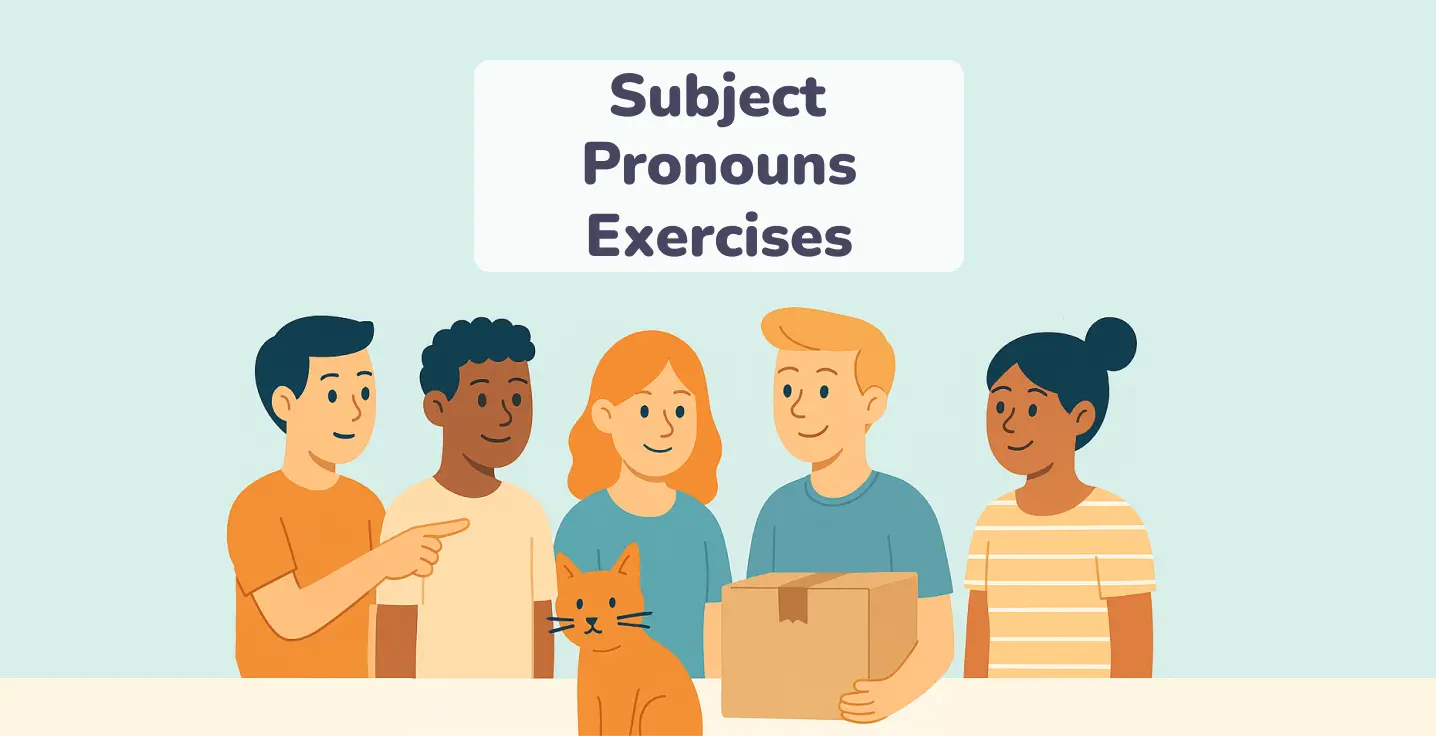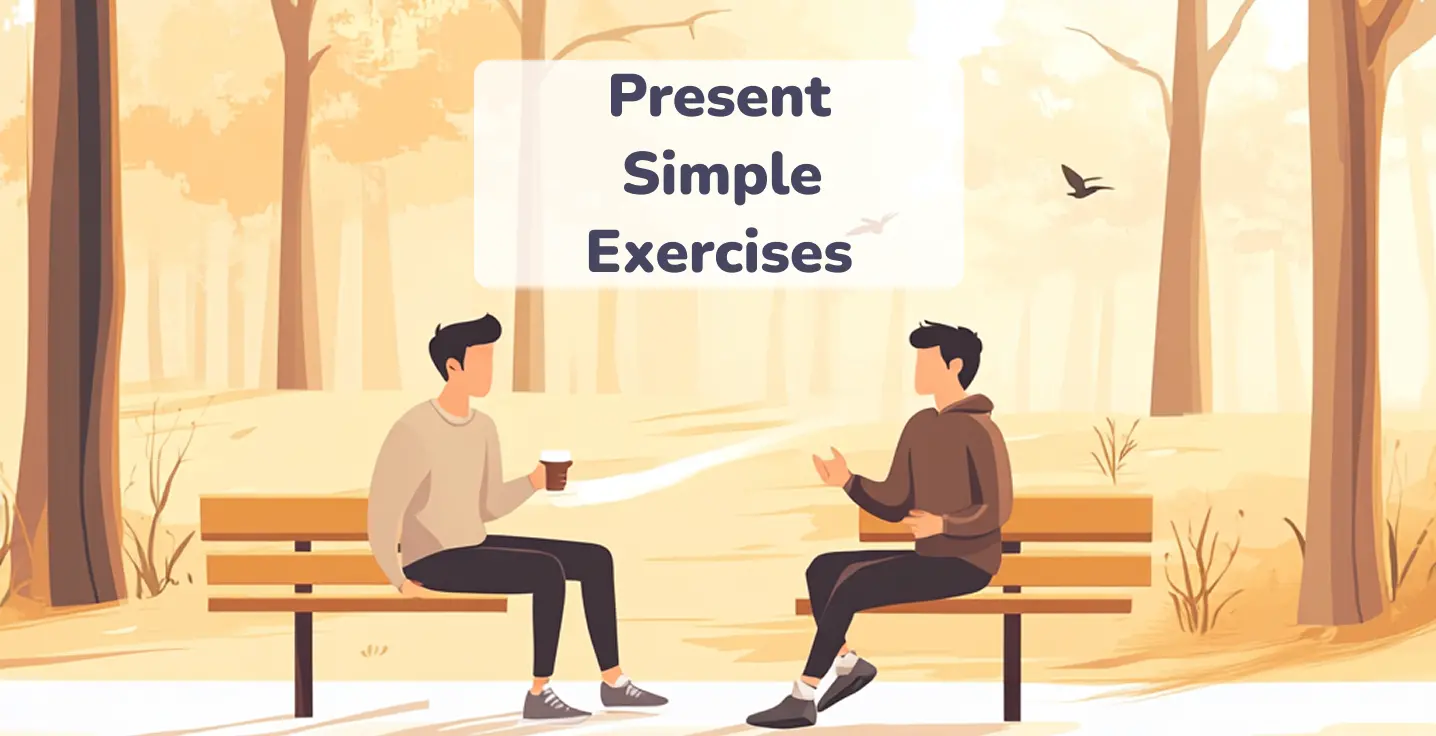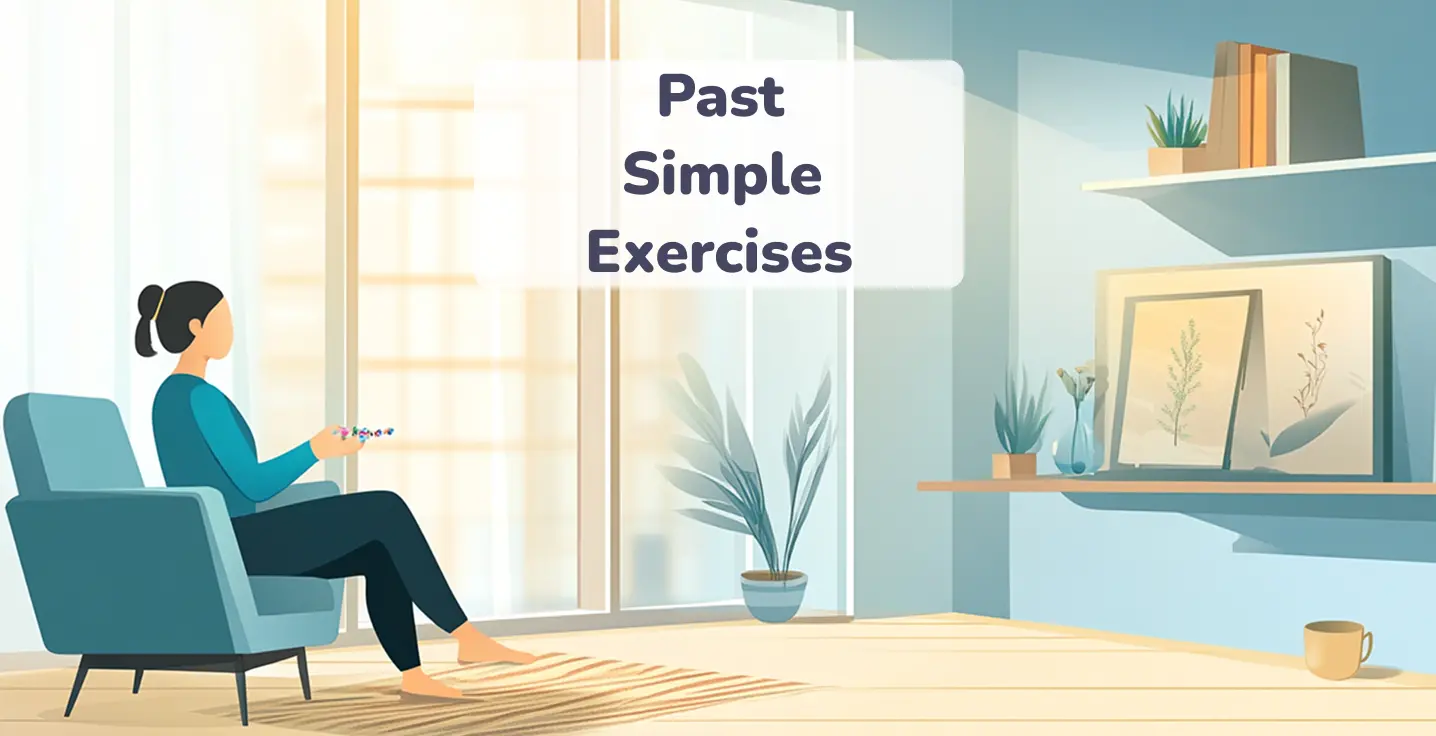Gender Pronouns Exercises
Why practice with a gender pronouns test?
Learning English from scratch can be challenging for students, especially because the language is evolving, and you need to learn more rules. It is the same for genders, so you need to get to the point of common and modern pronouns used for people and animals.
What else can you receive when doing these activities about gender pronouns? Let’s check the list of benefits:
- More accuracy. Passing an IELTS test, working on school homework, or just communicating with strangers, you will definitely use these pronouns. Mastering them will help you to avoid confusion and sound more natural.
- Developing grammar. In addition to sentence structure enhancement, you will make a foundation for more complex grammatical rules to study in the future.
- Skills comprehension. Gender pronouns exercises with answers cover reading, writing, listening, and even speaking parts. You build confidence that allows you to chat on WhatsApp freely, understand your favorite British series on Netflix, and read books from popular authors.
- Vocabulary expansion. These words can not be learned separately from various names, jobs, and even general pronouns in English, so you will add more basic terms to your vocabulary.
With such repetitions, you will make your English smoother and more natural for native speakers and other learners.
How to use these exercises effectively?
We have a short answer for you: “Be consistent.” Sounds easy and challenging at the time, but only daily practice will make you fluent, especially with engaging and informative gender pronouns activities you can find above.
To help you get the most out of these drills, we prepared some tips and tricks you can use in your study routine:
- Dive into rules. Check the sentence before questions to understand what they want from you — read, choose, write, select, and so on. In such a way, you will avoid mistakes and get to the point of an exercise.
- Be active. Placing a checkmark on your worksheet is not a big deal — you can even guess the answer — but what is the point? Try reading it deeply, maybe saying out loud to actually feel what it says, and go through unknown words or grammar structures.
- Work on your mistakes. As you receive a gender pronouns exercise with answers, you will see the correct option right away. Doing something wrong is OK, you just need to notice errors and solve them.
- Combine solo and group practice. You can do the assignments above on your own, and partner with your friends or classmates when studying through gamified exercises, like from Koto, and learn English while challenging other students.
After finishing a task, you can take some time and come back again to redo it and check your improvements. Balance different worksheets, and you will learn more effectively.
Common challenges in a gender pronouns quiz
Practices can be difficult in some cases, especially when we talk about international exams, so you need to learn about challenges as well to be prepared for them and don’t spend extra time defining how to overcome them before the start.
Here are 3 typical difficulties you can meet:
- Possessive forms. Learning how to use he or she is essential but what about mistakes made when you need to tell that something belongs to a person? You need to pay attention to her/hers, as an example.
- Confusing options. Typically, you can meet they, their, and theirs all in one line and you have to choose the correct one, which can increase your heartbeat rate for a while. You need to pay attention to the contexts — that will help even more than rules knowledge.
- Tricky moments. If your native language doesn’t have gender terms, you need to spend time understanding this concept and remembering how it works in English, especially for animals.
As you are prepared for a gender pronouns practice of any type, it is time to define how to make learning English a habit and not a one-day motivation boost.
How to integrate pronoun practice into daily life?
It is a piece of cake as you will use these pronouns daily: in chats, while reading articles, talking to and about colleagues, your teacher, professor, team players, and so on. Even clicking on the profile of some content creators, you can find their pronouns column on Instagram, Discord, and so on.
The other part of this question is about how you actually do these activities when your schedule is packed. The main tip is to make waiting your best friend. When commuting to school, office, or an appointment and standing-in-a-line thing, you can reach out to your smartphone — right in your pocket — and complete a gender pronouns exercise from Koto.
You can also adapt this practice to your daily routine, like writing a journal or listening to an audiobook or a podcast. Writing is one of the best ways to memorize information, so writing about people around you, someone close to you, or the one pissing you off, you will use more pronouns. As well as listening to a podcaster talking about historical figures. Choose what suits you.
Flashcards are also a superior tool for active recall, and you can use them in transport easily, especially if they are online and stored on your mobile phone.
Conclusion and tips
Completing the gender pronouns worksheet from our experts makes you more fluent in English and brings you closer to the study goal. Keep practicing and recalling the information, and you will master this grammar point.
Our advice is to be active and engaged, use sources that are suitable for your learning style and path, and keep going! We will see you in the next assignment paper.



